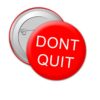Case Study #13: Bought by the Competition
 Mark Carlson bought Minnesota Mailing Solutions in 1998 for around $1M and grew the business over 10 years, eventually selling it for $4.5M.
Mark Carlson bought Minnesota Mailing Solutions in 1998 for around $1M and grew the business over 10 years, eventually selling it for $4.5M.
It was his ability to stay unemotional and focused on business fundamentals that ensured he walked away with the best offer possible.
In 1998 there was still a very large market for what Minnesota Mailing Solutions was offering: products that supported large-scale automated mailings for companies (think folding and inserting machines, with giant meters at the end of the assembly line).
Mark took the 6 employees and the inventory the business came with and went about growing the business.
In 2008 Mark saw two developments which triggered a desire to sell. The first was consolidation within the postage meter industry.
A merger shrunk a field of four USPS-sanctioned players to three. The second was a major and ongoing decline in the volume of first-class postage and sale of equipment.
This led the three remaining players to look for profits as growth slowed. That’s when the idea of opening their own corporate stores that would compete with their own dealers (like Mark) became attractive. Indeed, they were able to track from an entire history of numbers just how well certain markets could do.
Mark decided to bring in a broker to help him navigate the sale unemotionally and thoughtfully. When the broker first solicited offers, both buyers lowballed, trying to get the most for the least. After declining both of the offers (around $3M), Mark and the broker went back to the fundamentals. How was the business being valued?
Mark was using the same reasoning as when he originally bought the company: around 1X annual EBITDA plus inventory. He was doing around $4.5 million in annual revenue and had a small inventory and that was what he wanted. They went back to the buyers with the reasoning and the buyers also had realized now that they were bidding against each other.
The smaller player between the two had been Mark’s dealer for 10 years, and their fatal mistake was in thinking this was an emotional play. At one point, the remark was made to Mark’s broker, “Mark is loyal to us; he’ll never sell to them.” Them, in this case, was the biggest player in the industry and had been Mark’s direct competition for years.
Despite his broker dropping numerous hints that the bigger player had come in higher, that company didn’t increase their bid, and Mark took the better offer, which was greater by a magnitude of $500,000.
He got a 98% payout with 2% contingent on the inventory holding up in an audit, which it did, and three months after the deal closed he got that 2% as well. He also stuck around for three years on salary, transitioning the company into the new products and the buyers’ way of doing business.
An unfortunate epilogue to this otherwise happy ending for Mark, who had built great value in a business that traditionally featured 15% net margins, was a frivolous lawsuit from the buyer who had lost out on the deal.
Like a spurned lover, they reacted emotionally (precisely what Mark had avoided) and accused Mark of taking trade secrets, etc. After about a year of depositions and $100k in legal costs, the case was (unsurprisingly) dropped after the tantrum ran its course. But it’s a good thing to note that even if you’re able to remain unemotional, others may not.
Key takeaways:
- Know your numbers. The reason Mark was able to get even more money after receiving offers for 3X what he paid for the company was because he truly understood how his business worked, even in a declining market.
- Watch for signals. Mark saw the writing on the wall and rather than panic or avoid action, he moved and capitalized.
- Know your values. Everyone will approach the “loyalty” question in this story differently, but Mark didn’t decide his values during the transaction. He knew ahead of time, and they guided him to a successful conclusion.



